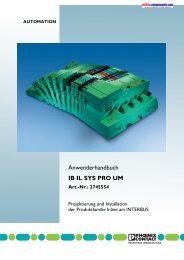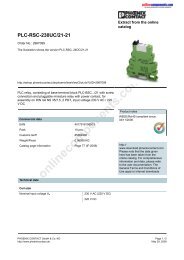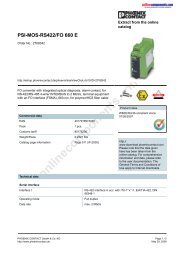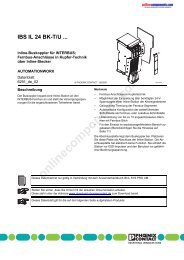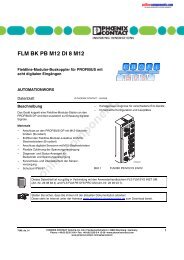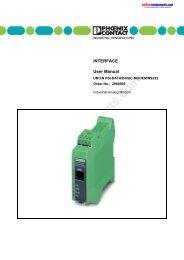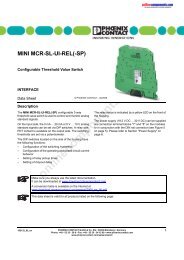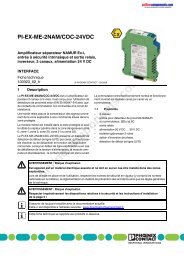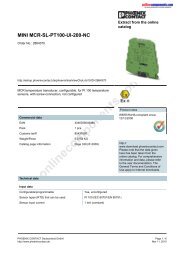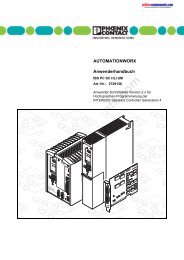UM EN FLX ASI SYS PRO INST - Onlinecomponents.com
UM EN FLX ASI SYS PRO INST - Onlinecomponents.com
UM EN FLX ASI SYS PRO INST - Onlinecomponents.com
You also want an ePaper? Increase the reach of your titles
YUMPU automatically turns print PDFs into web optimized ePapers that Google loves.
<strong>UM</strong> <strong>EN</strong> <strong>FLX</strong> <strong>ASI</strong> <strong>SYS</strong> <strong>PRO</strong> <strong>INST</strong><br />
4.1.6 Penetration Technique<br />
For the AS-i flat-ribbon cable, the penetration technique is used as the connection method.<br />
The penetration technique enables contact to be established quickly, easily, and reliably<br />
between the cable and the device without having to strip or cut the cable in any way. No<br />
special tools are required.<br />
The electrical connection of cables in the flat-ribbon cable to the device is established via<br />
contact pins, which penetrate through the cable sheath to the copper conductors. This<br />
method is therefore only suitable because the position of the conductors in the cable is fixed<br />
and there is no braided shield to prevent penetration.<br />
Figure 4-9<br />
Cable connection using the penetration technique<br />
The cable support has negative contouring, which prevents incorrect insertion of the cable<br />
resulting in polarity reversal. When the device locking latch is closed, the contact pins<br />
automatically penetrate through the cable sheath and the conductor insulation into the litz<br />
wire structure. Following assembly, additional pressure is not required in order to ensure<br />
permanent contacting.<br />
The penetration technique used with AS-i means that the system can be installed extremely<br />
easily and quickly.<br />
online<strong>com</strong>ponents.<strong>com</strong><br />
4-8 PHO<strong>EN</strong>IX CONTACT 7513_en_01



